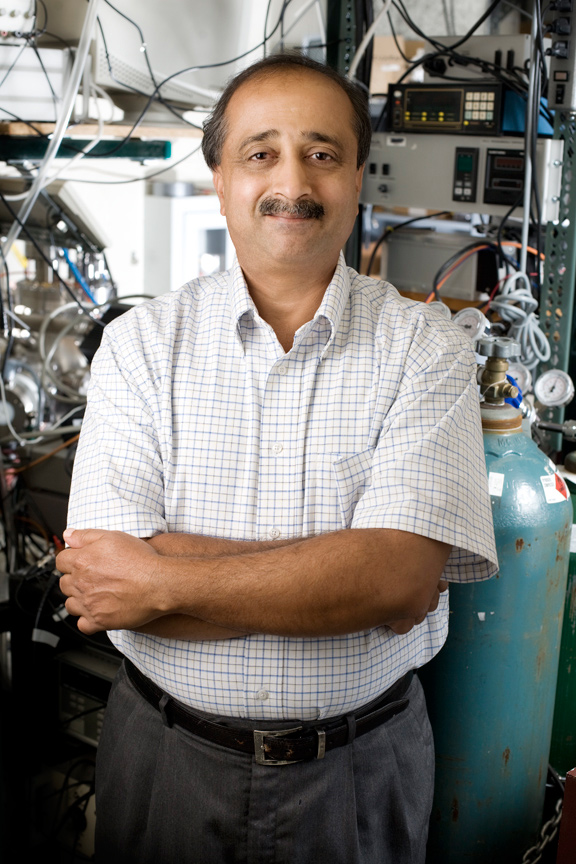The University of Virginia Patent Foundation is celebrating its 30th year of dedicated service to the University's faculty, staff and student inventors. In that time, the Patent Foundation has generated more than $36.6 million in revenue for the University and distributed an additional $18.4 million to University inventors and their collaborators
All this week on UVA Today, we will be running profiles of University inventors who were honored by the Patent Foundation this past year.
Bellave S. Shivaram, Ph.D.
Physics
If current technology commercialization had a Holy Grail, it would probably be an effective alternative to gasoline. Over the past few years, scientists have made considerable progress toward reducing consumers’ dependence on fossil fuels, but no one alternative has emerged that is as efficient — and even as affordable — as gasoline.
Enter Bellave S. Shivaram, an associate professor of physics at U.Va. whose recent discovery of a new class of hydrogen storage materials could lead to higher-performing hydrogen fuel cells with a wide variety of applications. The novel materials, developed in collaboration with post-doctoral fellow Adam B. Phillips, are capable of absorbing approximately twice as much hydrogen as are other known materials. And because they can store and transport hydrogen at room temperature and low pressures, these new materials are also considerably simpler and less expensive to produce than other known alternatives.
“In terms of hydrogen absorption, these materials could prove a world record,” said Phillips, who was a doctoral student at the time of the discovery.
He added that most materials today absorb only 7 percent to 8 percent of hydrogen by weight, and only at extremely low temperatures. "Our materials absorb hydrogen up to 14 percent by weight at room temperature," he said. "By absorbing twice as much hydrogen, the new materials could help make the dream of a hydrogen economy come true.”
The U.Va. Patent Foundation has filed a Patent Cooperation Treaty (international) patent application on this breakthrough technology and is currently working to find a company to take it to the marketplace.
“These materials are the next generation in hydrogen fuel storage materials, unlike any others we have seen before,” Shivaram said. “They have passed every litmus test that we have performed, and we believe they have the potential to have a large impact.”
The U.Va. physicists presented their findings at the November 2007 International Symposium on Materials Issues in a Hydrogen Economy in Richmond, Va., and published their work in the March 14 issue of Physical Review Letters, published by the American Physical Society. Their research is supported by the National Science Foundation and the U.S. Department of Energy and has been highlighted in Science (AAAS, U.S.), Chemistry World (Royal Society of Chemistry, U.K.) and Materials World (Institute of Materials, Minerals and Mining, U.K.), and by Japan’s Nikkei Business Publications and more than 300 Web sites and online publications.
Media Contact
Article Information
December 12, 2008
/content/inventor-profile-bridging-gap-alternative-fuels

